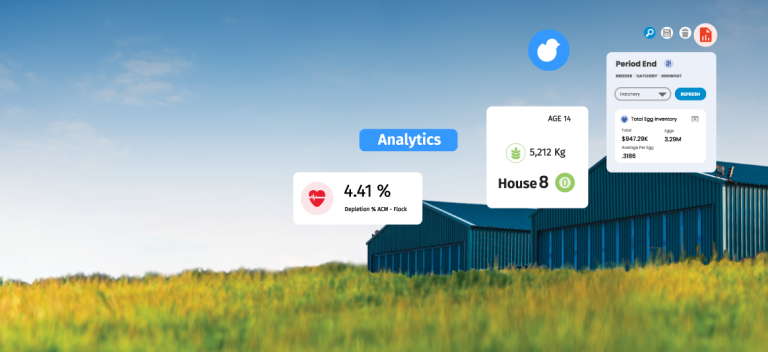Planning and projecting live operations is never easy and it is especially difficult during these unprecedented times: too many factors to consider, too many unknowns, too many incoming requirements, and ever-changing market conditions add even more complexity.
A little bit over a decade ago – when I was just starting my exciting journey in the poultry world – I had to plan pullet placements on a big sheet of paper using pencils and a ruler. The Gantt chart provided good visibility and perspective especially when it was hung on the wall. Naturally, once everything was finalized on paper, my phone began ringing and that beautiful chart went off the wall and back on the table. Unfortunately, moving one placement did not automatically adjust all other placements to the right dates, so each one of those placements and transfers had to be moved manually. This process happened on a regular basis, so I had to have multiple paper rolls with different versions and scenarios. For every placement plan, we had to add a projection for the eggs set, chicks hatching, and then converting broilers into kilos. I was exceptionally happy that my part ended at the eggs.
There were several issues with what I had to face at that time, the first being the technology I used was far from perfect and the other was that the approach itself was partially affected by the tools I had at hand.
Planning today tries to solve the same issues and answer the same questions: do we have technology and tools advanced enough to make the planning process effortless and accurate enough to eliminate the need to re-plan multiple times?
These days, when businesses are mostly market- and customer-oriented, the poultry industry must be as agile as possible, but this flexibility has to be applied to the past to get results now or be very farsighted and pretty much predictive.
Even if we can somehow get enough information about future market behaviors, will our projections accurately predict our production based on the flocks that are currently on lay, the flocks that will get into production, and the flocks that will still be placed in the future? If we simply plan based on 180 eggs per hen housed, we can get the total volume flock numbers but there will be no week by week, age by age breakdown, no consideration of changing flock growth and production dynamics, potential disease challenges, changes in the environment, etc., again any changes to the initial plan can’t be adequately incorporated. We can go even further and incorporate weekly production curves that would include production KPIs and factors. We could add previous flock history for better accuracy of the curves and actual flock performance to increase projection accuracy, as well as additional factors that could affect production, such as geography and facility types and many others. On top of this, it would be great to have the ability to run simulations and scenarios to see how changes in performance and plans influence the overall planning picture. And of course, since we live in the 21st century, we have powerful tools such as machine and reinforced learning available (I already mentioned the power of those in my previous articles).
Planning and projecting live operations is a very exciting and fascinating process. In some aspects, it is almost an art, since live animals can’t be planned and projected like factory machinery with defined max speeds and optimal production performance. There are too many moving parts and scenarios that can go from right to wrong and back.
Modern technologies and industry-dedicated software tools can give extremely accurate results and data for analysis and decision making, including whether the company should change its marketing strategy to increase sales due to overstock, or contact a supplier to adjust orders, buy or sell eggs, do more egg sets, find more growers, change feeding program, keep flocks longer and so forth.
Despite the technology or tool in use, there is one key factor to successful and accurate planning – accurate and well-structured data. If the data is inconsistent, wrong, and unreliable, there is no tool simple or advanced enough that will give you good and accurate results based on bad data. There is no magic.
Do you put data at the heart of your poultry business?



